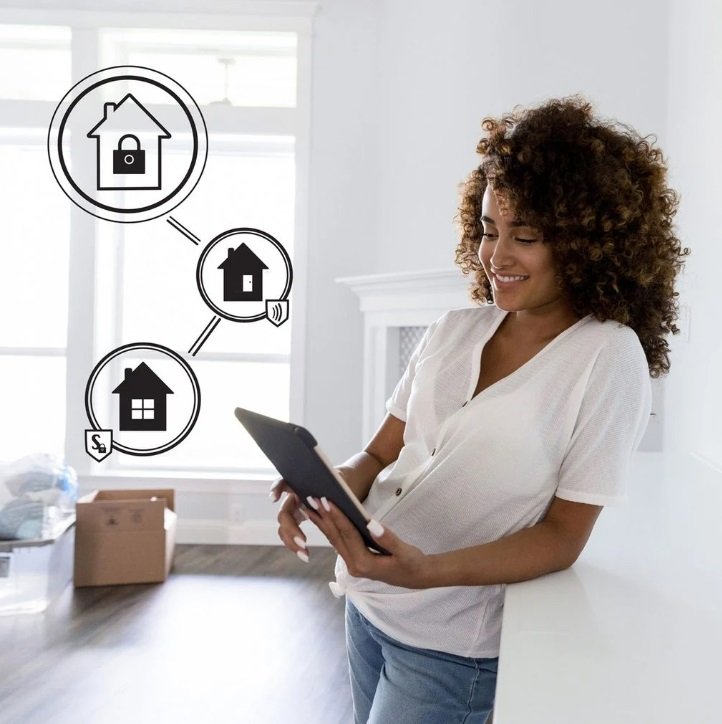The evolution of home security has taken a significant leap with the advent of smart home technologies. Integrating Artificial Intelligence (AI) and the Internet of Things (IoT) into home security systems has revolutionized the way we protect our homes. These technologies not only enhance safety but also provide convenience and peace of mind. This comprehensive guide explores how AI and IoT are transforming home security, offering a blend of personal narrative, analytical insights, and forward-looking perspectives.
The Evolution of Home Security
A Personal Narrative
A few years ago, I moved into a new home in a quiet suburban neighborhood. While the sense of community was strong, I couldn’t shake the feeling that I needed to ensure my family’s safety. Traditional security systems seemed cumbersome and limited. That’s when I discovered smart home security. The ability to monitor and control my home from anywhere using my smartphone was a game-changer. This personal journey led me to delve deeper into how AI and IoT could further enhance home security.
Understanding AI and IoT in Home Security
What is AI?
Artificial Intelligence refers to the simulation of human intelligence processes by machines, especially computer systems. In the context of home security, AI enables systems to learn from data, identify patterns, and make decisions with minimal human intervention.
What is IoT?
The Internet of Things (IoT) describes the network of physical objects embedded with sensors, software, and other technologies to connect and exchange data with other devices and systems over the internet. In home security, IoT devices include smart cameras, doorbells, locks, and sensors.
Benefits of Integrating AI and IoT in Home Security
1. Enhanced Monitoring and Surveillance
AI-powered cameras can distinguish between humans, animals, and inanimate objects, reducing false alarms. They can recognize familiar faces and alert homeowners of strangers. IoT-enabled cameras provide real-time video feeds accessible from anywhere, offering constant vigilance over the property.
2. Predictive Analytics
AI can analyze data from various sensors and predict potential security threats. For example, unusual patterns of movement or repeated failed attempts to unlock a door can trigger preemptive alerts, allowing homeowners to take action before an incident occurs.
3. Automation and Control
IoT devices can be programmed to perform specific actions based on triggers. For instance, smart locks can automatically lock doors when homeowners leave, and smart lights can turn on and off to simulate occupancy, deterring potential intruders.
4. Integration with Other Smart Home Devices
AI and IoT home security systems can seamlessly integrate with other smart home devices like thermostats, lights, and entertainment systems, creating a unified smart home ecosystem. This integration not only enhances security but also improves overall home automation and energy efficiency.
Key Components of a Smart Home Security System
1. Smart Cameras
Equipped with AI, smart cameras can perform facial recognition, detect motion, and send real-time alerts. They offer high-definition video and night vision capabilities, ensuring clear visibility at all times.
2. Smart Locks
Smart locks provide keyless entry and can be controlled remotely. They can generate temporary access codes for guests and provide logs of who entered and exited the home.
3. Smart Sensors
These include door and window sensors, motion detectors, and glass break sensors. They communicate with the central hub and provide instant alerts if any unauthorized access is detected.
4. Smart Doorbells
Smart doorbells come with built-in cameras, microphones, and speakers. They allow homeowners to see and communicate with visitors remotely, adding an extra layer of security at the entrance.
5. Central Hub
The central hub acts as the brain of the smart home security system, connecting all devices and enabling communication between them. It can be controlled via a smartphone app, providing real-time updates and control.
Setting Up Your Smart Home Security System
Step-by-Step Guide
- Assess Your Needs
- Evaluate the security requirements of your home, considering factors like size, layout, and specific areas that need monitoring.
- Choose Compatible Devices
- Select devices that are compatible with each other and can be integrated into a single system. Brands like Ring, Nest, and Arlo offer comprehensive smart security solutions.
- Install Devices Strategically
- Place cameras at entry points, smart locks on main doors, and sensors on windows and less accessible entrances. Ensure that the central hub is centrally located for optimal connectivity.
- Connect and Configure
- Follow the manufacturer’s instructions to connect devices to the central hub and configure settings via the smartphone app. Customize alerts, automation routines, and access controls.
- Regular Maintenance
- Regularly update the software and firmware of all devices to ensure they are functioning optimally. Replace batteries and check for any connectivity issues periodically.
Future Trends in Smart Home Security
AI Advancements
AI technology continues to evolve, with future systems expected to offer even more advanced features such as emotional recognition, behavior prediction, and more sophisticated anomaly detection.
5G Connectivity
The rollout of 5G networks will enhance the speed and reliability of IoT devices, allowing for more seamless integration and faster response times.
Increased Interoperability
As the smart home ecosystem grows, increased interoperability between devices from different manufacturers will become more common, allowing homeowners to build more customized and comprehensive security systems.
Sustainability
Eco-friendly smart home security solutions are on the rise, focusing on energy-efficient devices and sustainable practices, reducing the environmental impact of home security systems.
Conclusion
Integrating AI and IoT into home security systems offers a transformative approach to protecting our homes. These technologies provide enhanced monitoring, predictive analytics, automation, and seamless integration with other smart home devices. By understanding the key components and benefits of smart home security, homeowners can create a safe and secure environment tailored to their needs. As technology continues to advance, the future of home security looks promising, with smarter, faster, and more efficient systems on the horizon. Embracing these innovations not only ensures safety but also contributes to a more connected and convenient lifestyle.


